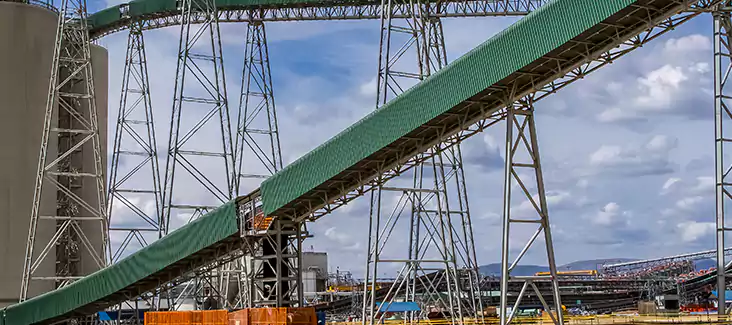This process begins when your company decides to face the Top 5 climate risks all businesses are exposed to, such as legal and regulatory risks (creation of limitations or fees on the emission of GHGs), financial risks (restriction of access to investments due to lack of compliance with requirements of sector institutions), reputational risks (changes in the perception of consumers about your company or society about your segment)
market risks (changes in the behavior of consumers or suppliers generate inadequacy with the demand or supply chain) technological risks (innovations generating less environmental impact by their competitors) and physical risks (extreme weather events its operational or logistical capacity).
Step by step to decarbonize your business ///
1) CALCULATE YOUR CARBON FOOTPRINT
Blockchain platform tracks and calculates your company's carbon footprint using accounting data, satellite photos and greenhouse gas protocols
2) ENGAGE YOUR VALUE CHAIN
Our tool also allows you to include your suppliers, partners and customers to decarbonize your entire value chain.
3) PROVE IT IS FREE OF GREEN WASHING
Certification companies can access the platform in real time to audit the proof and calculations of your consolidated carbon footprint.
4) COMPLETE YOUR JOURNEY
All the companies that comprise your value chain can share emission reduction targets, thereby supporting the decarbonization of your business.
Inventory and Emissions Management

A detailed inventory is the first step for any organization that intends to manage its greenhouse gas emissions. In order to carry out an inventory of this type with technical rigor and the possibility of independent auditing, methodologies such as the GHG Protocol were developed, which we adopt in our work. This protocol divides an organization's emissions into 3 groups: Scope 1 (emissions generated directly by the organization itself), Scope 2 (generated in the production of energy consumed by the organization) and Scope 3 (generated by third parties when providing services or providing inputs necessary for the operation of the organization). Under the GHG Protocol, an organization is only required to report Scope 1 and 2 emissions.
However, disregarding Scope 3 can mask the emissions actually generated. Although emissions management is often a voluntary initiative, it tends to become an unavoidable effort for companies, whether due to market issues, obtaining financing or even new legal requirements. Our blockchain-based solution is the ideal platform for your organization to inventory and manage emissions. In addition to allowing the automatic loading of documents and accounting statements, and independent auditing in real time, its different modules facilitate the expansion and increasing detailing of the inventory, involving suppliers and customers, and allowing an increasingly accurate management of emissions throughout across your organization's value chain.
Neutralization of Emissions

Once the emissions inventory is completed, a company has two paths to reduce its carbon footprint and other greenhouse gases. The first is to change your processes to emit less, which is called decarbonization – a strategy that has limits that may be insurmountable, depending on your economic activity. To go beyond these limits, the second path is neutralization, or the purchase of environmental assets, such as carbon credits, for example, to offset emissions that cannot be eliminated.
To ensure the effectiveness of neutralization, it must only be carried out with assets held in custody by highly reputable international organizations such as the UN), which attest to the validity, uniqueness and make public information about each asset transacted. BlockC's platform allows our clients to acquire these assets in custody in an easy and transparent way, setting up a public portfolio that attests to our clients' efforts to neutralize their emissions.
Criação de Ativos Ambientais

RENEWABLE ENERGY CERTIFICATES
To neutralize emissions within what the GHG Protocol defines as Scope 2, or emissions generated in the production of energy consumed by your company, the most suitable type of environmental asset is Renewable Energy Certificates. These papers are issued by energy generators from renewable sources, such as wind power, for example. For every kilowatt hour of energy produced by these generators, a certificate is issued attesting to how much carbon this clean energy has left to throw into the atmosphere, compared to a plant that uses coal and other “dirty” sources. By purchasing these certificates, your company is neutralizing its own emissions linked to the energy it consumes in its processes.
CARBON CREDITS
Carbon credits are the basic bargaining chip for any effort to neutralize greenhouse gas emissions. Each credit corresponds to a ton of carbon equivalent that was no longer emitted or was removed from the atmosphere by the organization that generated this certificate. There are several types of carbon credits, such as avoided emissions or forest preservation, among others. BlockC curates the credits it offers for its clients to advance their neutralization strategies, attesting to their origin and uniqueness. Our work also includes the attribution of UN Sustainable Development Goals seals to each credit, so that the acquired portfolio not only offsets emissions, but also expands the spectrum of SDGs achieved by our clients.
CBIOS AND RENEWAL
Renovabio is a Federal Government program to encourage producers of fuels from renewable sources, such as ethanol, biodiesel and biogas. Companies that produce fuels of this type can also issue certificates, called CBIOS in this program. For each ton of carbon equivalent that the production and consumption of this clean fuel fails to throw into the atmosphere, compared to oil, for example, a certificate attested by the National Petroleum Agency is issued. Companies interested in neutralizing their emissions can then acquire these certificates. Renovabio creates a regulated environment where fossil fuel distributors are required to purchase CBIOS. To participate in the program, producers of renewable fuels must complete three stages. The first is to fill out Renovacalc, an extremely detailed form about its operation, for the ANP to assess, since the certificate assesses not only the amount of fuel produced, but also the energy efficiency and “cleanliness” of the production process at the from the point of view of emission of greenhouse gases. The second is to hire an independent audit to validate the data entered in Renovacalc, a requirement of the ANP so that the producer can issue the CBIOS. Thirdly and lastly, the fuel producer must look for a securities distributor to keep and account for its certificates, so that they can be traded in over-the-counter environments of the stock exchange, as in the case of B3. BlockC assists producers of renewable fuels in every step of this process, from filling out the Renovacalc, through hiring an independent audit, to the custody agreement with securities distributors.
Sustainable Financing / Green Bonds

Green Bonds (or “green bonds”, in Portuguese) are papers that a private or public organization launches in the market to raise funds, backed by an economic activity that reduces or avoids greenhouse gas emissions in the atmosphere, whether it is the implementation of a wind farm or the replacement in an industrial installation of old engines, which emit large amounts of CO2, for more modern ones, which emit less. To be technically valid and auditable, Green Bonds must be certified by reputable international organizations in the sector, such as the Climate Bond Initiative.
Each Green Bond has a life cycle, which starts with an original report, goes through auditing, certification, agreement with the financial institution that issues the bonds and then extends to periodic reports to certify that the resources are being invested in the original purpose and continue to offset greenhouse gas emissions into the atmosphere. BlockC supports companies and institutions in every step of this journey, from initial reports to closing the deal.


